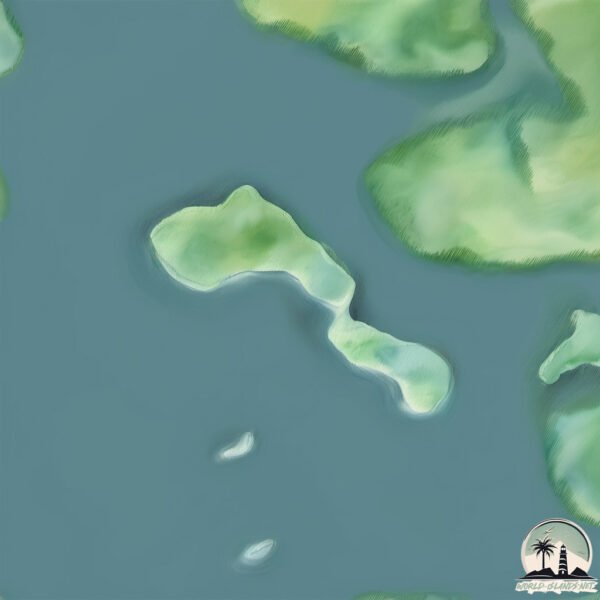Welcome to Hearn Island , a Continental island in the North Atlantic Ocean, part of the majestic Atlantic Ocean. This guide offers a comprehensive overview of what makes Hearn Island unique – from its geography and climate to its population, infrastructure, and beyond. Dive into the details:
Geography and size of Hearn Island
Size: 0.248 km²Coastline: 3 kmOcean: Atlantic OceanSea: North Atlantic OceanContinent: North America
Hearn Island is a Tiny Island spanning 0.248 km² with a coastline of 3 km.
Archipel: –
Tectonic Plate: North America – Covers North America and parts of the Atlantic and Arctic Oceans, characterized by diverse geological features and varying levels of seismic activity.
The geographic heart of the island is pinpointed at these coordinates:
Climate and weather of Hearn Island
Climate Zone: ContinentalClimate Details: Warm-Summer Humid Continental ClimateTemperature: Warm Summer
Climate Characteristics: Features warm summers and cold winters with consistent precipitation, common in higher latitudes.
Topography and nature of Hearn Island
Timezone: UTC-04:00Timezone places: America/La_PazMax. Elevation: 2 m Mean Elevation: -1 mVegetation: Open WoodlandTree Coverage: 0%
The mean elevation is -1 m. The highest elevation on the island reaches approximately 2 meters above sea level. The island is characterized by Plains: Flat, low-lying lands characterized by a maximum elevation of up to 200 meters. On islands, plains are typically coastal lowlands or central flat areas.
Dominating Vegetation: Open Woodland
Vegetation: 2 vegetation zones – Low Diversity Island
Infrastructure and Travelling to Hearn Island
Does the island have a public airport? no .
Does the island have a major port? no .
The mean population of Hearn Island is 14 per km². Hearn Island is Gently Populated. The island belongs to Canada .
Continuing your journey, Cape LaHave Island is the next notable island, situated merely km away.
Big lobster by Hearn Island
Short underwater clip of the biggest lobster I've ever seen, hiding out in his cave at the foot of Hearn Island, Prospect, Nova Scotia, ...
Big lobster by Hearn Island
Short underwater clip of the biggest lobster I've ever seen, hiding ...
Short underwater clip of the biggest lobster I've ever seen, hiding out in his cave at the foot of Hearn Island, Prospect, Nova Scotia, ...
Flounder by Hearn Island
Short underwater clip of Chris L photographing an unfrightened ...
Short underwater clip of Chris L photographing an unfrightened flounder between Hearn and Burnt Island in Prospect, Nova ...
Whale Fall V0 (FA) on Hearn Island, Nova Scotia
simple boulder up the rock overlooking the campfire site.
simple boulder up the rock overlooking the campfire site.
Canada is classified as Developed region: G7: Group of Seven – Major advanced economies, including Canada, France, Germany, Italy, Japan, the United Kingdom, and the United States. The level of income is High income: OECD.
News – Latest Updates and Headlines from Hearn Island
Stay informed with the most recent news and important headlines from Hearn Island. Here’s a roundup of the latest developments.
Loading...
Please note: The data used here has been primarily extracted from satellite readings. Deviations from exact values may occur, particularly regarding the height of elevations and population density. Land area and coastline measurements refer to average values at mean high tide.

